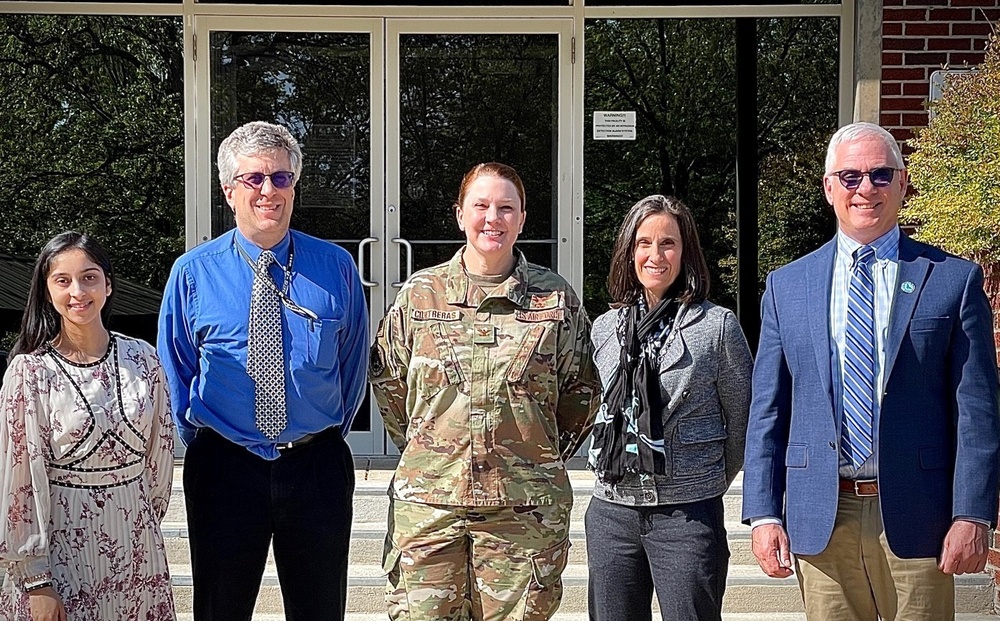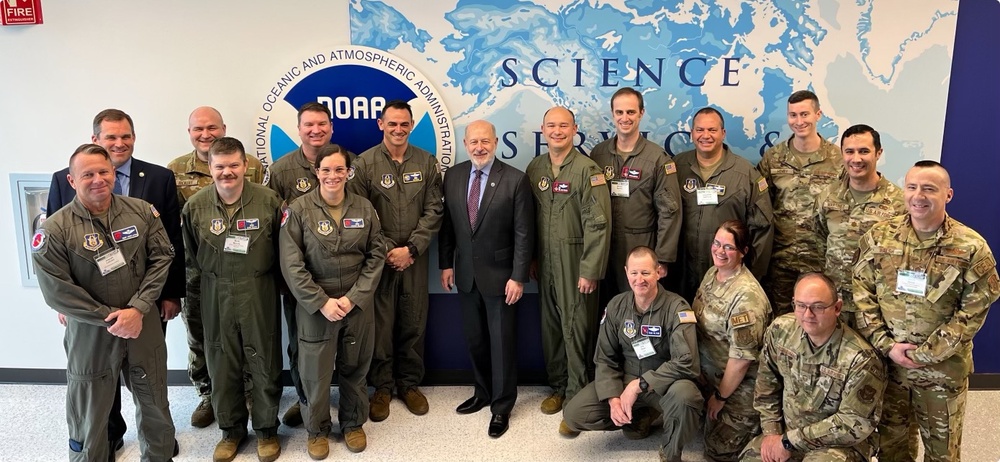DVIDS – News – NASA and NOAA visit the Joint Personnel Recovery Agency
Article By Hamna Khan, Technology and National Security Fellow (JPRA)
On April 28th, 2022 the National Aeronautics and Space Administration (NASA) Search and Rescue Office Chief, Dr. Lisa Mazzuca, and the National Oceanic and Atmospheric Administration (NOAA) Satellite Products and Services Division Chief, Mr. Thomas Renkevens, visited the Joint Personnel Recovery Agency (JPRA) Headquarters on Fort Belvoir to meet with its Director, Col Anne-Marie Contreras and her staff to discuss NASA’s second-generation emergency beacons, the Satellite-aided Search and Rescue (SARSAT) program.
As a Chairman’s Controlled Activity of the Joint Chiefs of Staff, JPRA facilitates Personnel Recovery stakeholder activities across the Department of Defense and the Interagency. Beacon and reporting technology is of primary interest to JPRA as a means to continually advance its support to isolated personnel.
Satellite-aided Search and Rescue (SARSAT)
The SARSAT program is an international organization that provides space-based relay of distress signals, or alerts, from emergency beacons that use the 406 megahertz (MHz) frequency. SARSAT provides the alerts to search and rescue (SAR) authorities globally. The original satellite-aided search and rescue architecture has long since provided capability for aviators and sailors. However, NASA has recently identified a need for quicker response times and more accurate location data than the original system could accommodate.
Last week’s meeting was organized by the JPRA J7/9 Division Chief, Mr. Steven Kelly and the Technology and National Security Fellow, Ms. Hamna Khan, who is a researcher focused on 406 MHz emergency distress beacon technologies.
Along with NASA and NOAA, JPRA invited members from the U.S. Coast Guard SARSAT Program, the Department of the Army Personnel Recovery Branch, key policy representatives from the Under Secretary of Defense for Policy, and the Air Force Rescue Coordination Center.
Past meetings were arranged at JPRA headquarters to promote collaborative conversations on the future of emergency beacon technologies within the Department of Defense. In particular, Dr. Mazzuca and her team from NASA’s Search and Rescue Office, shared the latest technology developments for 406 MHz emergency distress beacons and discussed the possibilities and challenges ahead for the 406MHz emergency distress beacon ecosystem.
Next Steps
JPRA will continue advocating next generation emergency beacons throughout the Joint Staff for additional research and development as well as defining joint requirements. JPRA looks to assist in any formal acquisition activities to take full advantage of emerging SARSAT technologies as a means to assist the Military Departments with personnel recovery capabilities.
| Date Taken: | 04.28.2022 |
| Date Posted: | 08.22.2022 13:54 |
| Story ID: | 427774 |
| Location: | VA, US |
| Web Views: | 219 |
| Downloads: | 0 |
PUBLIC DOMAIN
This work, NASA and NOAA visit the Joint Personnel Recovery Agency, must comply with the restrictions shown on https://www.dvidshub.net/about/copyright.


 Private Internet Access gives you unparalleled access to thousands
of next-gen servers in over 83 countries and each US state. Your
VPN experience will always be fast, smooth, and reliable.
Private Internet Access gives you unparalleled access to thousands
of next-gen servers in over 83 countries and each US state. Your
VPN experience will always be fast, smooth, and reliable.
